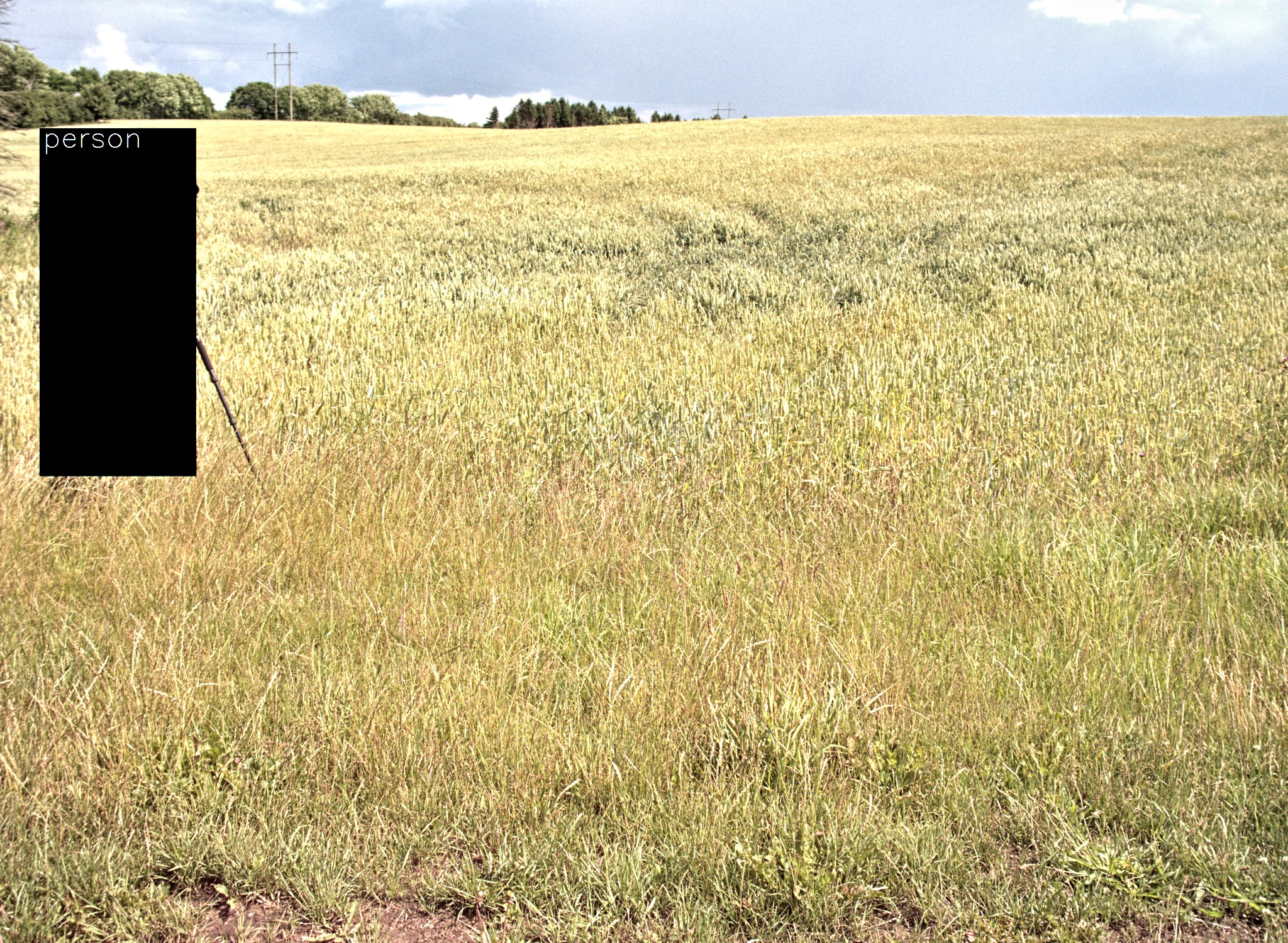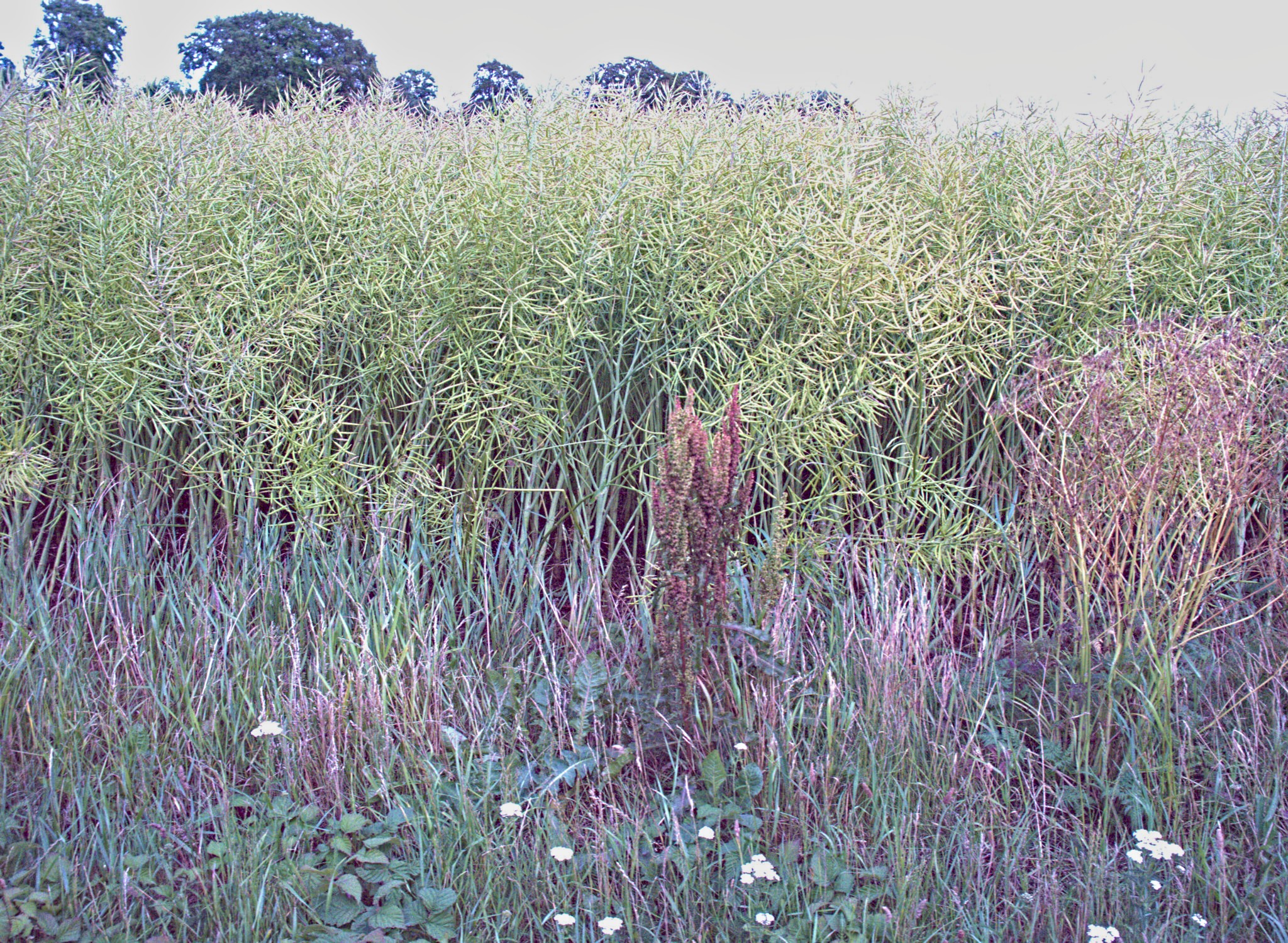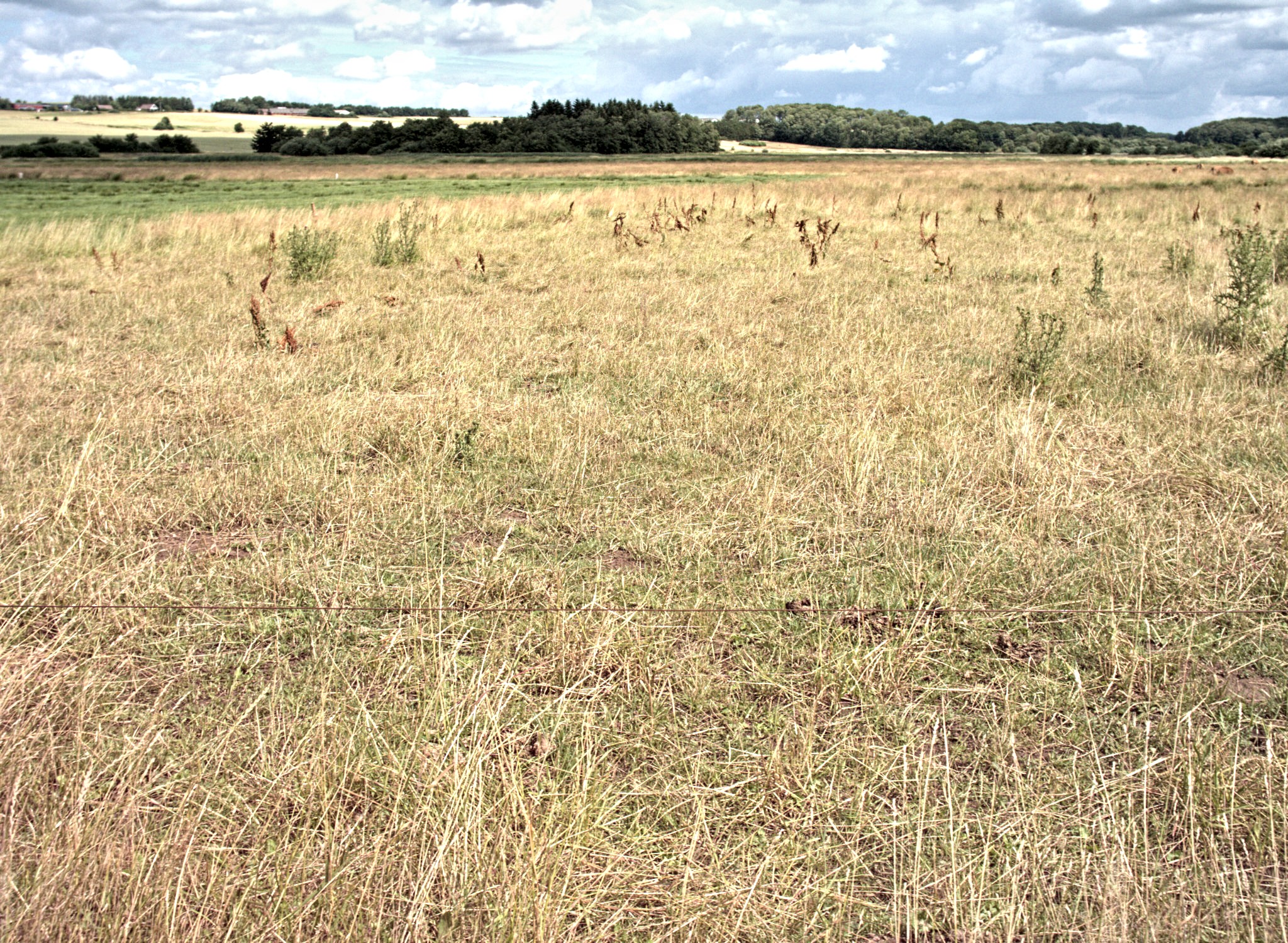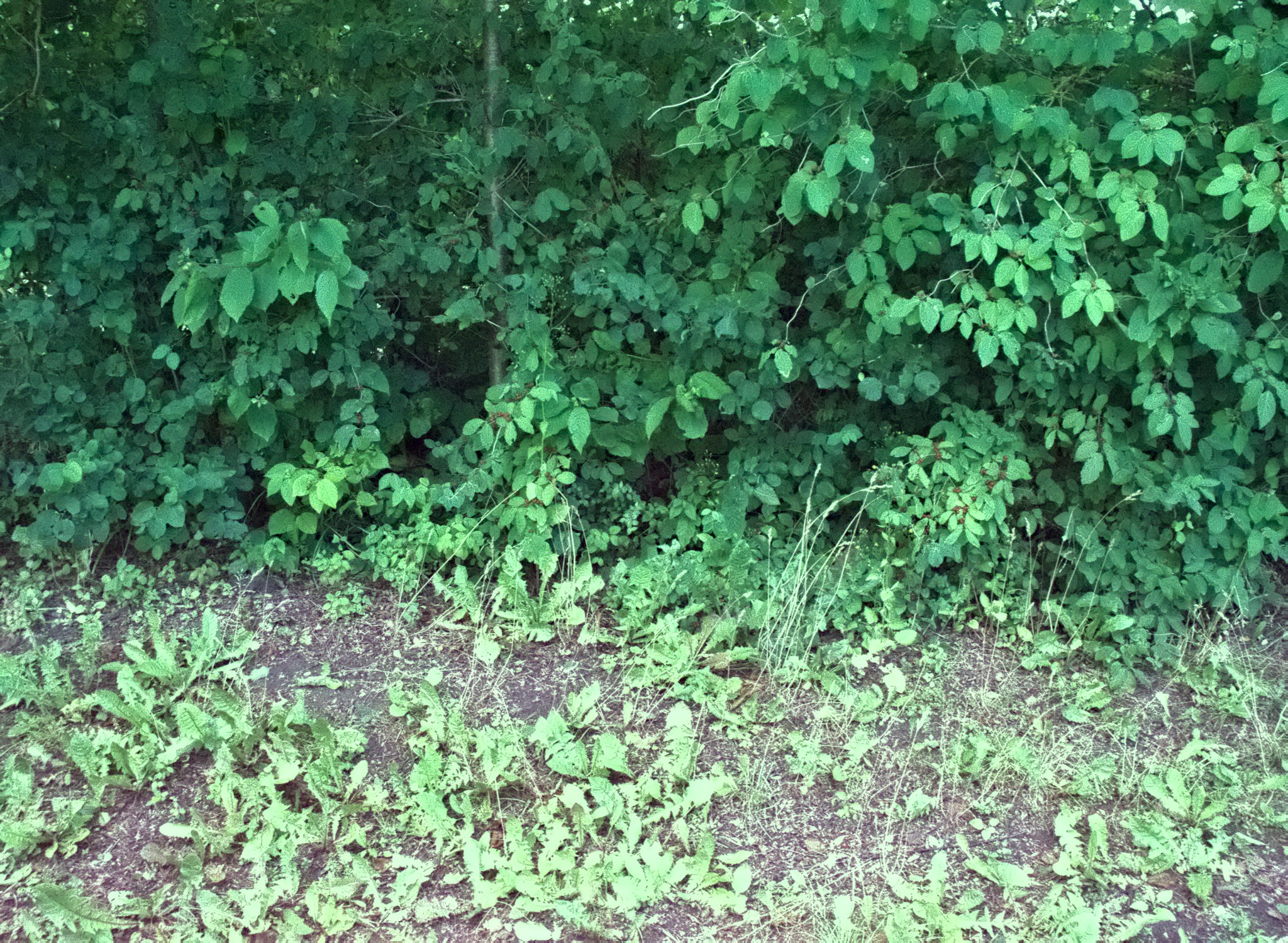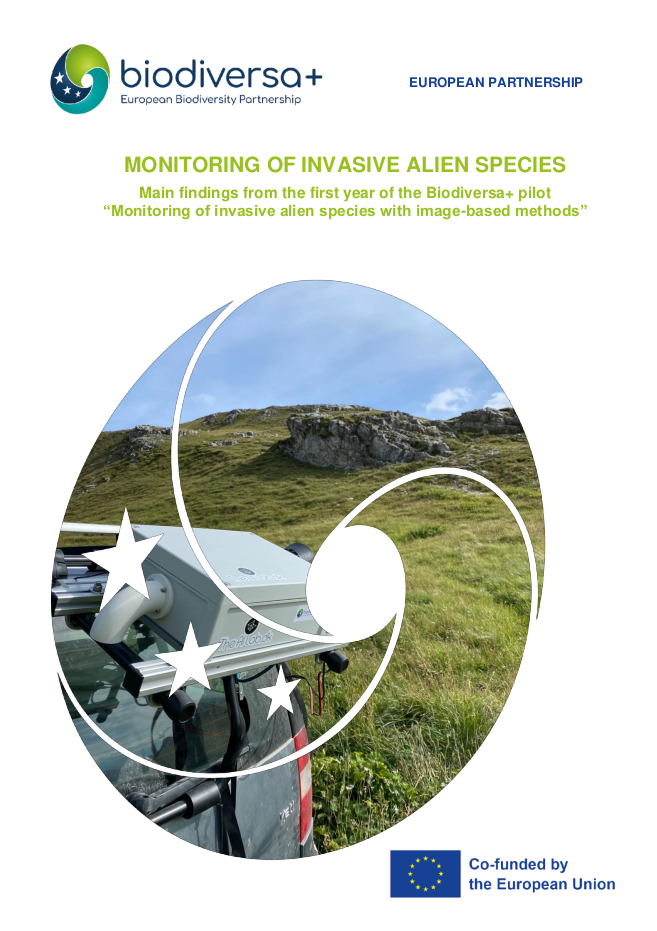CamAlien
High-speed camera system for monitoring vegetation and objects along roads
CamAlien is a high-speed camera system designed for efficient monitoring of vegetation and objects along roadways. The camera system captures high-quality images at rapid intervals, to monitor the full roadside when following traffic speed. The system utilizes a global shutter sensor for accurate scene rendering and geotagging for precise data collection. The camera system makes it possible to collect extensive data sets, which can be used for a digital library of road object types and locations, but also subsequent training of machine learning algorithms for automated object recognition.
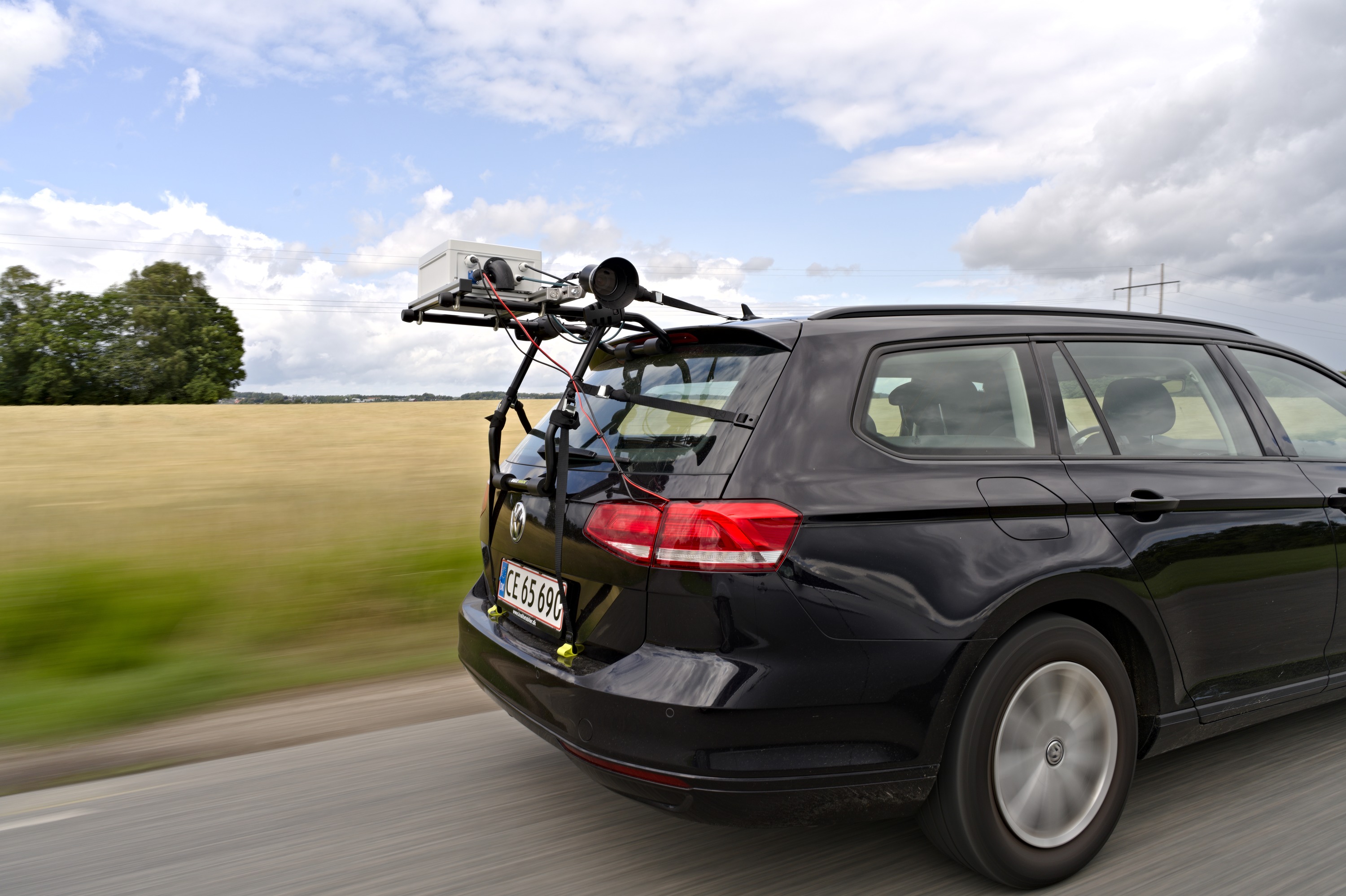
CamAlien consists of a camera mounted on an adjustable arm, a processing unit, remote controller, and a car mount. Furthermore, it has two types of power connectors, allowing it to be powered either from a car with 12 VDC or from a socket with 100-240 VAC. The physical remote controller allows easy control and simple monitoring of the system.
System overview
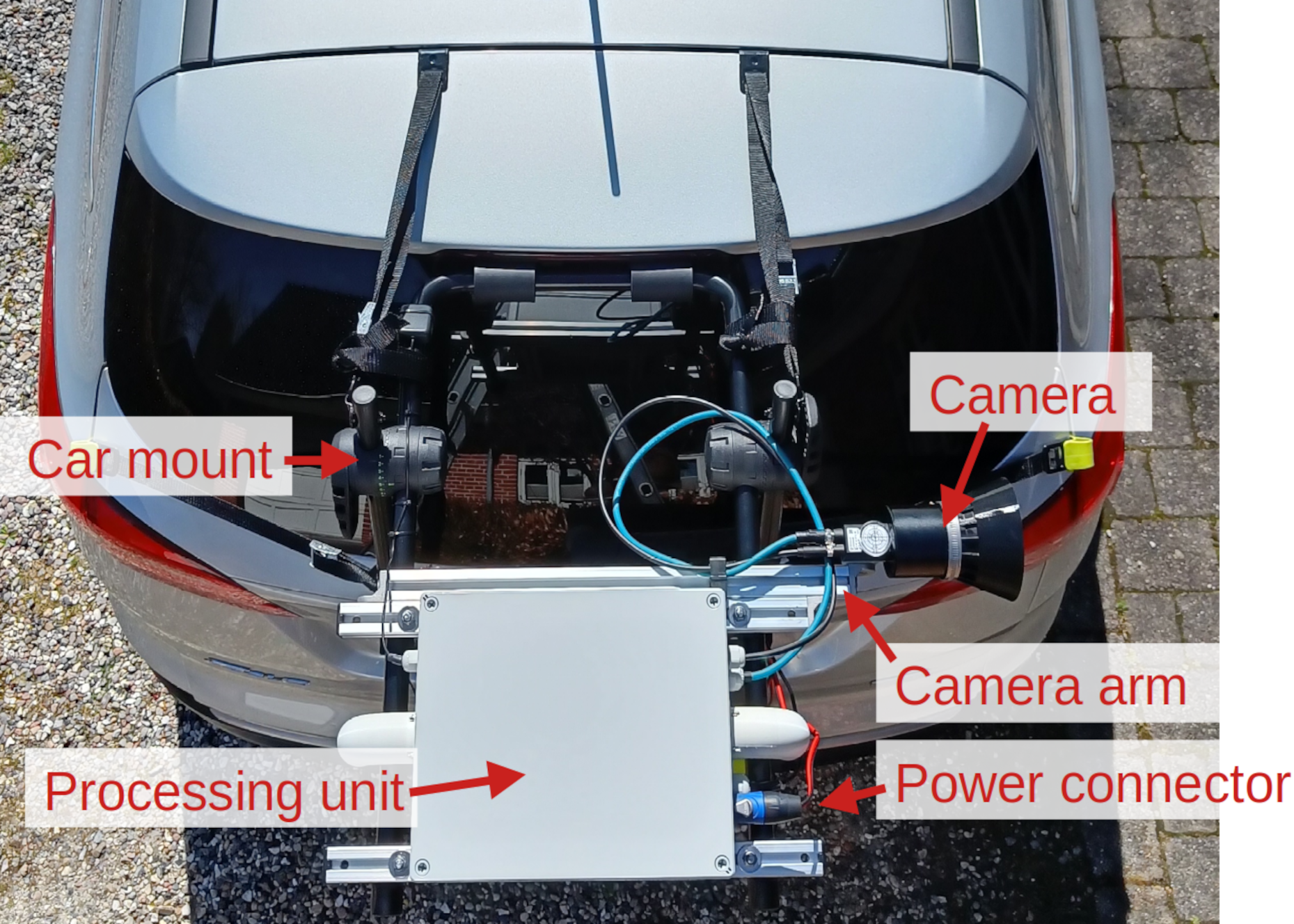
Processing unit

Remote controller
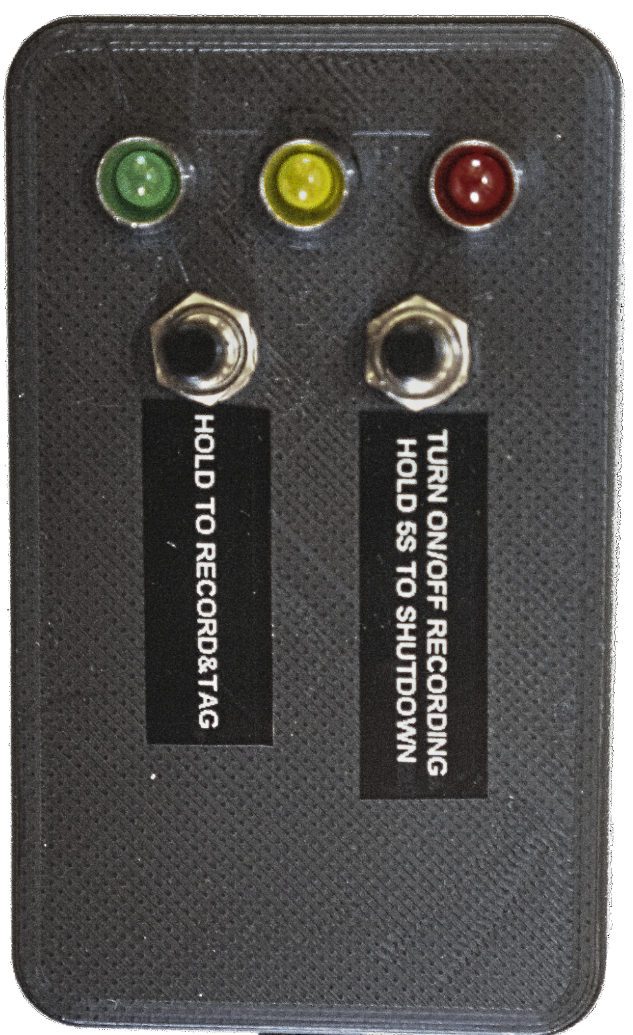
Web interface
In addition to the physical remote controller, the system also has a web interface allowing control, monitoring and configuration of the system.
The web interface includes:
- Live video stream
- Controls for starting and stopping recording
- Current number of images in buffer and external disk
- Status field with human-readable info messages
- Current GNSS data including position and speed
- Computer statistics including disk usage and temperatures
- Shutdown and reboot controls
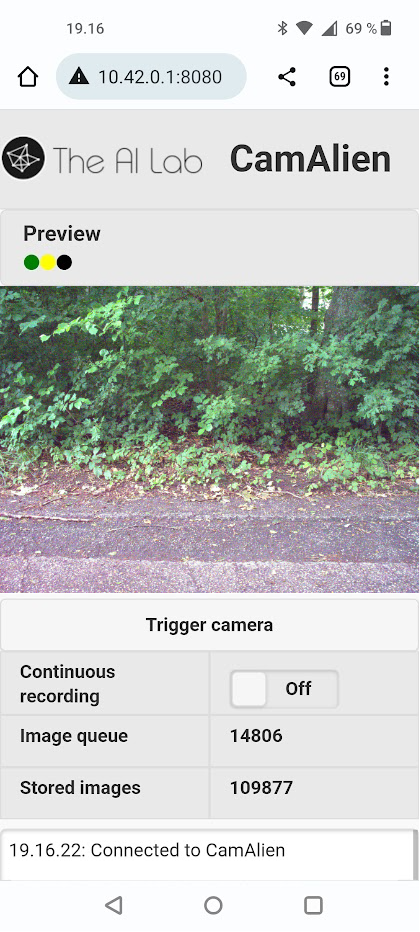
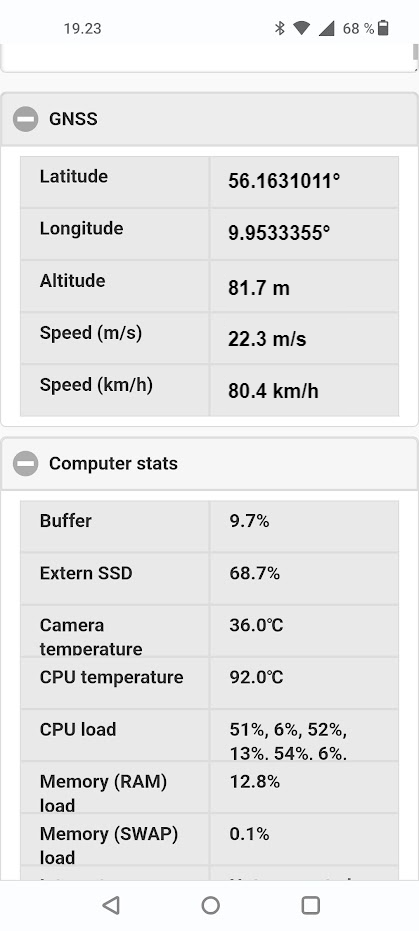
Software
The processing unit of the system includes a compute element that is connected to the camera, the GNSS module, the modem, and the remote controller. The figure below illustrates with a flowchart how different components of the system are connected, and how images flow from the camera, through the memory (RAM) and an internal queue, and are finally stored at an external SSD. A buffer allows the user to record images for a configured number of seconds back in time, when a button is pressed in either the web interface or with the physical remote controller. When recording is active, raw images are stored on a fast internal NVME disk. From here, they are anonymized asynchronously using an AI model that automatically detects and removes people, bikes, and cars from the images. Finally, the anonymized images are stored to an external SSD.

Speed, quality and coverage
The camera system is designed for high speed, up to 130 km/h. To get high-quality images at these speeds, a global shutter camera is needed, and the exposure time needs to be short to ensure a low amount of pixel blur. The graph to the right illustrates the relation between speed, exposure time and perceived pixel blur.
CamAlien automatically adjusts the exposure time based on the current speed to obtain the best possible image quality.
Furthermore, the frame rate is adjusted accordingly, to obtain full coverage of the road side at a configurable distance. That is, the system is designed to maintain a small overlap between consecutive images.
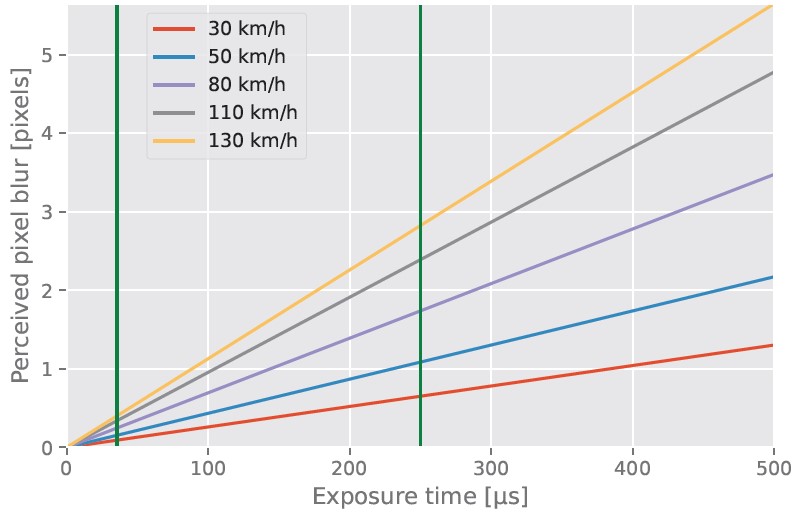

Sample images acquired while driving
Other use cases: Litter detection
CamAlien can also be used for detecting and mapping litter in the roadside. Click here to learn more
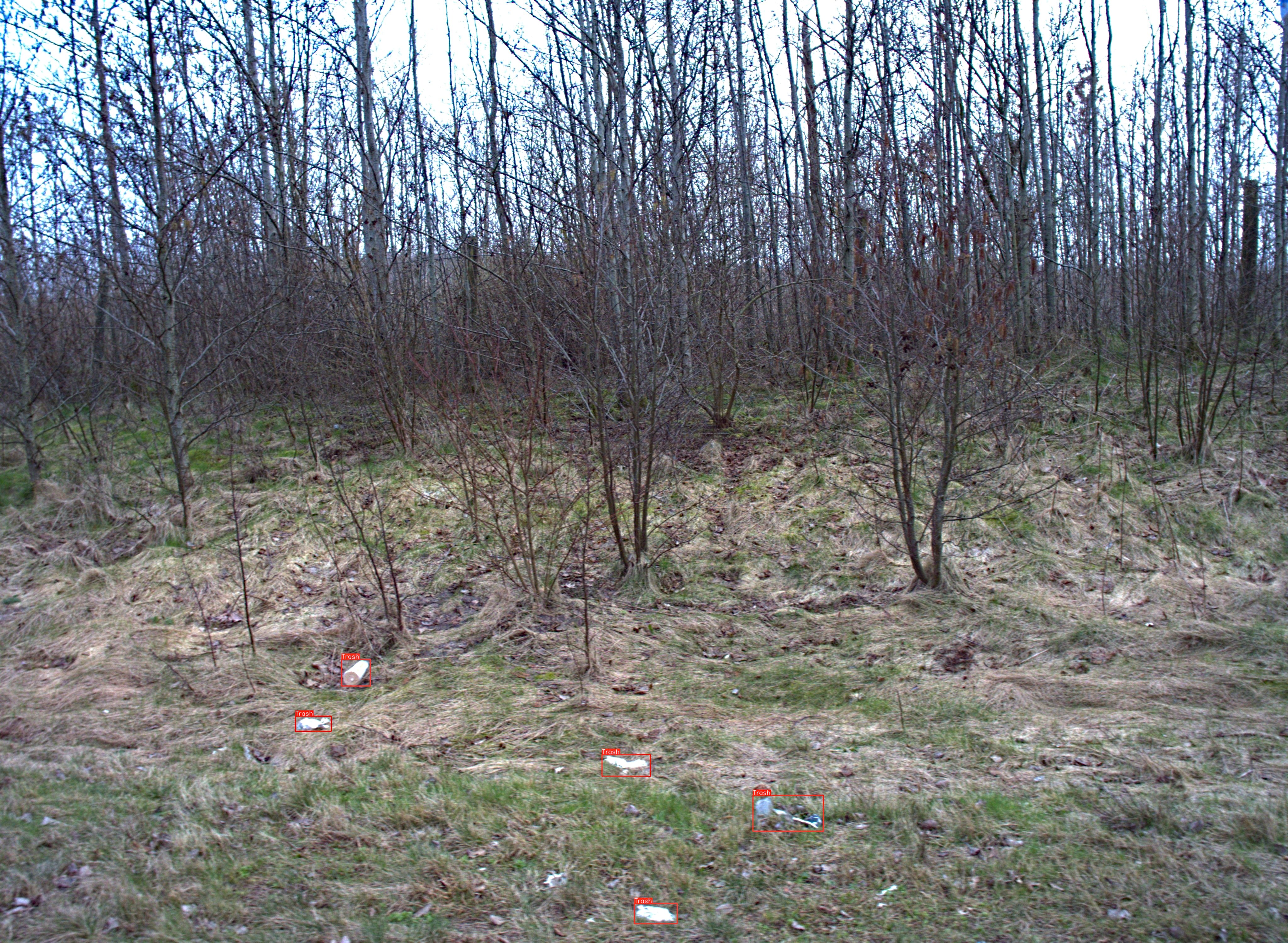
Our Customers Say
CamAlien was first developed in 2023 on request by the European biodiversity partnership Biodiversa+, where it is still today actively used in 11 countries as a car-mounted camera system to map invasive alien plant species along roads across Europe.
Aarhus University, Department of Ecoscience, Denmark
Research Institute Nature and Forest, Belgium
Ministry of Economy and Sustainable Development, Croatia
Swedish Environmental Protection Agency, Sweden
Plant Science and Biodiversity Centre SAS, Slovakia
Eurac Research, Italy
Israel Nature and Parks Authority, Israel
French Biodiversity Agency, France
Nature Conservation Agency, Czech Republic
Executive Environment Agency, Bulgaria
Regional Science and Technology Fund, Azores
The Biodiversa+ pilot ‘Monitoring of invasive alien species with image-based methods’ (IAS) has released two reports covering their experiences with CamAlien in both 2023 and 2024.
IAS, First year report: “the data collection with the CamAlien system was smooth”
In 2024, the CamAlien system received a remote software updated, and some partners started experimenting using CamAlien in trains and along rivers and canals.
IAS, Second year report: “By implementing the adaptive recording, we managed to drastically reduce the amount of redundant data collected. All partners expressed enthusiasm about this new feature, which also made data handling much easier than during the previous field season.”
“In France, the CamAlien was deployed on SNCF trains, whereas in the Autonomous Province of Bolzano (Italy) on SAD trains … In France and Belgium, the partners also experimented with taking photos with the CamAlien along rivers and canals”
In 2025, an upgraded version of CamAlien was developed, focusing on running AI models in real-time on the camera edge-device.
IAS, Second year report: “In the final stage of the pilot, we will explore options for moving the image recognition models onto the camera systems to further reduce the time delay from observation to actionable information”
Price
- CamAlien: 8970€ + VAT
- CamAlien Real-time: Upon request
More information
For more information, or if you want to use CamAlien for roadside monitoring, please contact us at:
contact [at] theailab.dk

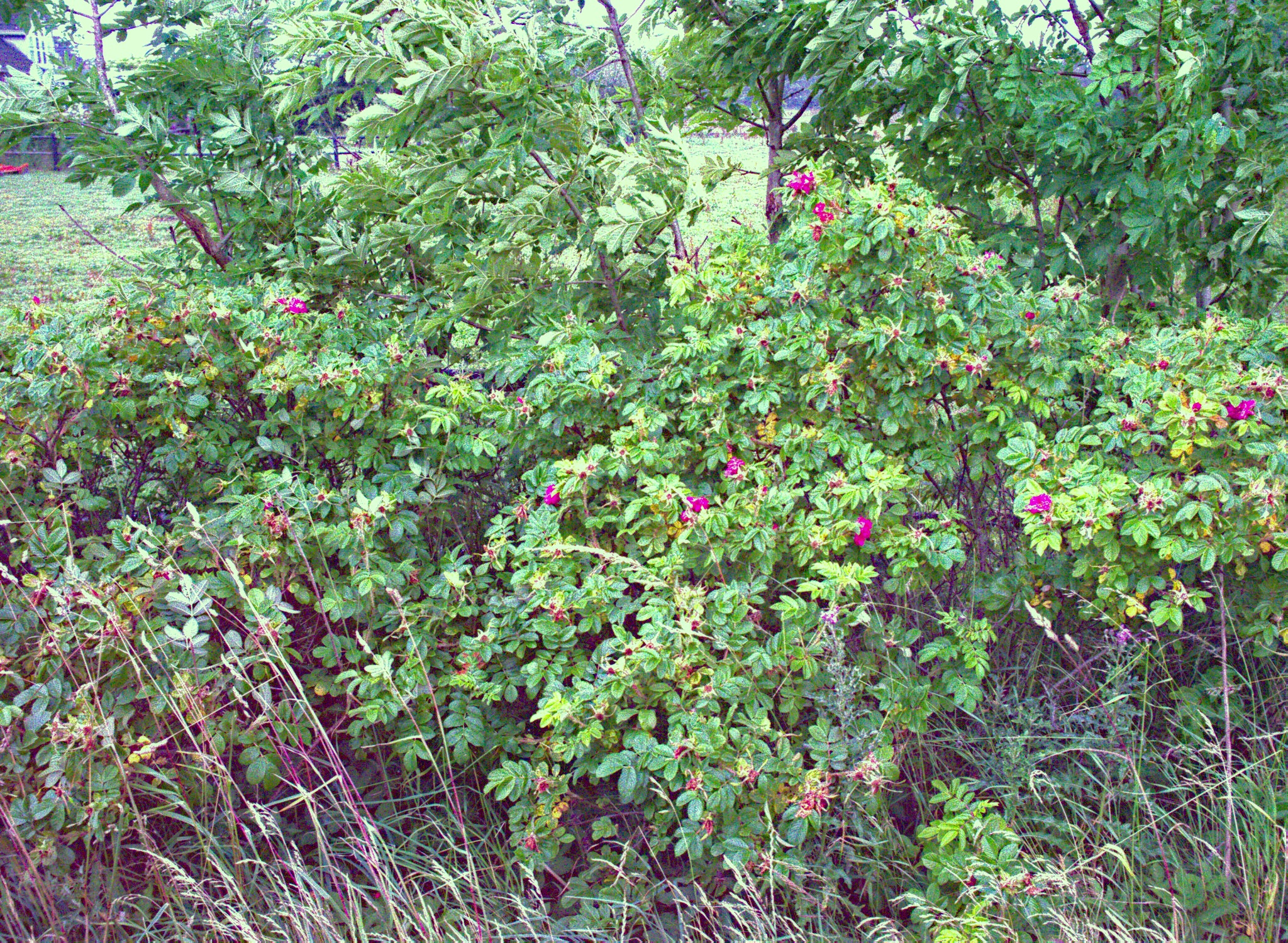
![{“gain”: “11.5”, “detections”: {“vehicle”: [[518, 1410, 1733, 1869]]}}](https://theailab.dk/wp-content/uploads/2024/01/CT_20230410T115903.539848_GT_20230410T115903.490385_lon_10.1916824_lat_57.170608699999995_alt_68.936_vel_159.841_expt_233.68_gain_11-1.jpg)

